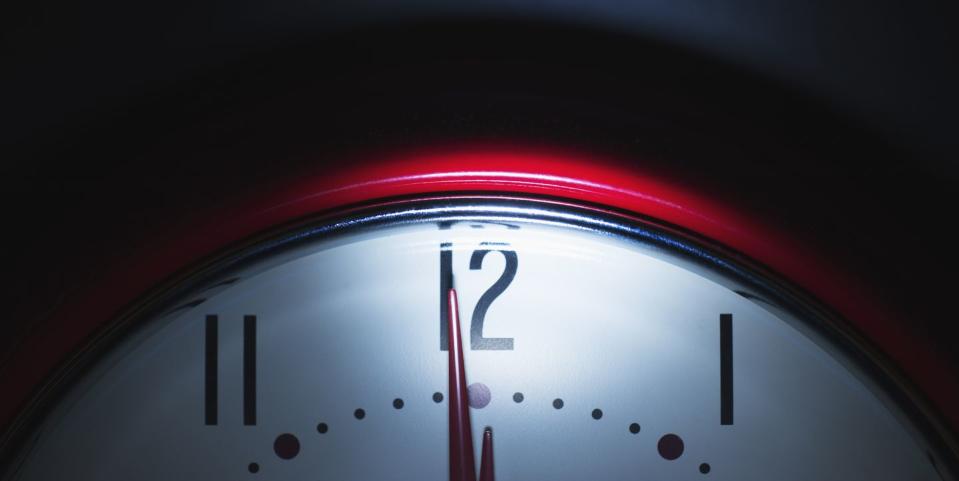The Doomsday Clock Just Hit 90 Seconds to Midnight. That's Dangerously Close.

The Bulletin of the Atomic Scientists annually sets the Doomsday Clock to show how close humanity is to destroying itself.
Moving the clock from 100 seconds to midnight to 90 seconds was a decision brought by the Russian invasion of Ukraine, among other factors.
The Doomsday Clock was created in 1947 and has moved over 20 times since its introduction.
When the Bulletin of Atomic Scientists unveiled the world’s first Doomsday Clock in 1947—a symbolic example of how close humanity is to destroying itself—they set the time at 17 minutes until midnight. Well, time’s rapidly running out.
This morning, the Bulletin just updated its Doomsday Clock for 2023, and it’s now just 90 seconds away from midnight—a 10-second march closer than the past few years.
“We are living in a time of unprecedented danger, and the Doomsday Clock time reflects that reality,” Rachel Bronson, president and CEO of the Bulletin of the Atomic Scientists,, said in a press release. “Ninety seconds to midnight is the closest the clock has ever been set to midnight, and it's a decision our experts do not take lightly.”
The Bulletin of the Atomic Scientists was founded in 1945 by Albert Einstein, J. Robert Oppenheimer, Eugene Rabinowitch, and other scientists involved in developing the first atomic weapons. They believed their work created man-made threats to human existence. Two years later, they introduced the Doomsday Clock to show the world’s vulnerability to catastrophe from nuclear weapons, technology, and other factors.
The 2023 Doomsday Clock shift—the clock had been set at 100 seconds to midnight since 2020—is due largely, but not exclusively, thanks to Russia’s continued invasion of Ukraine and the increased risk of nuclear escalation for every month the two countries remain in conflict. The Bulletin says continued threats from climate crisis, and the breakdown of institutions needed to mitigate risks associated with advancing technologies and biological threats, also contributed to the shift.
From the Bulletin’s statement:
“Russia’s war on Ukraine has raised profound questions about how states interact, eroding norms of international conduct that underpin successful responses to a variety of global risks. And worst of all, Russia’s thinly veiled threats to use nuclear weapons remind the world that escalation of the conflict—by accident, intention, or miscalculation—is a terrible risk. The possibility that the conflict could spin out of anyone’s control remains high.”
Along with the Russian aggression, the scientists also warn about a Russian-American treaty covering nuclear weapons that expires in February 2026, as well as the continued expansion of nuclear weapon capabilities in China, North Korea, Iran, and India.
To add to the mix, the Bulletin says the climate crisis is worsening, bio-threats—including laboratory accidents—are greater now than ever before, and disruptive technology has grown in concern.
“The Doomsday Clock is sounding an alarm for the whole of humanity,” said Mary Robinson, former United Nations high commissioner for human rights. “We are on the brink of a precipice.”
You Might Also Like
